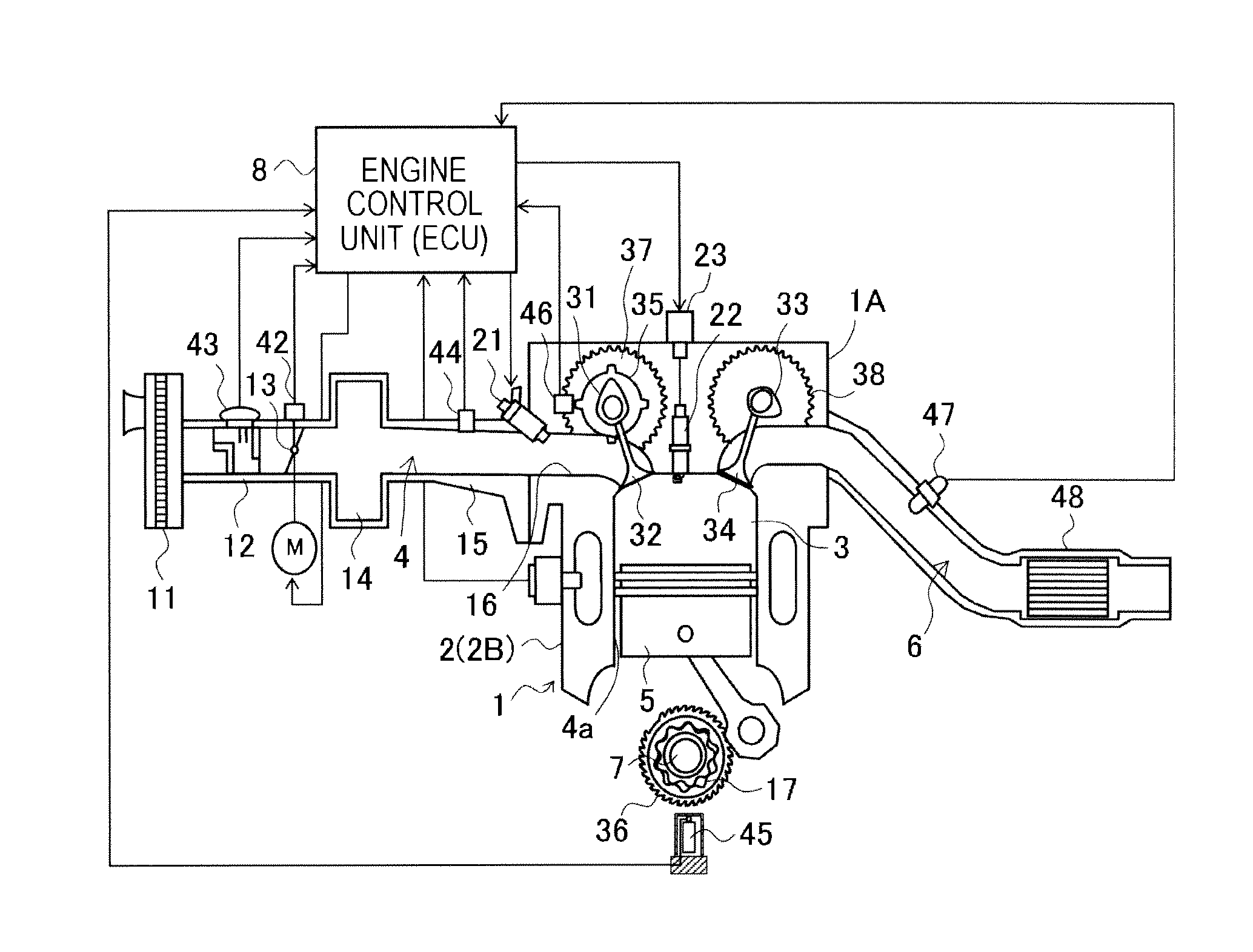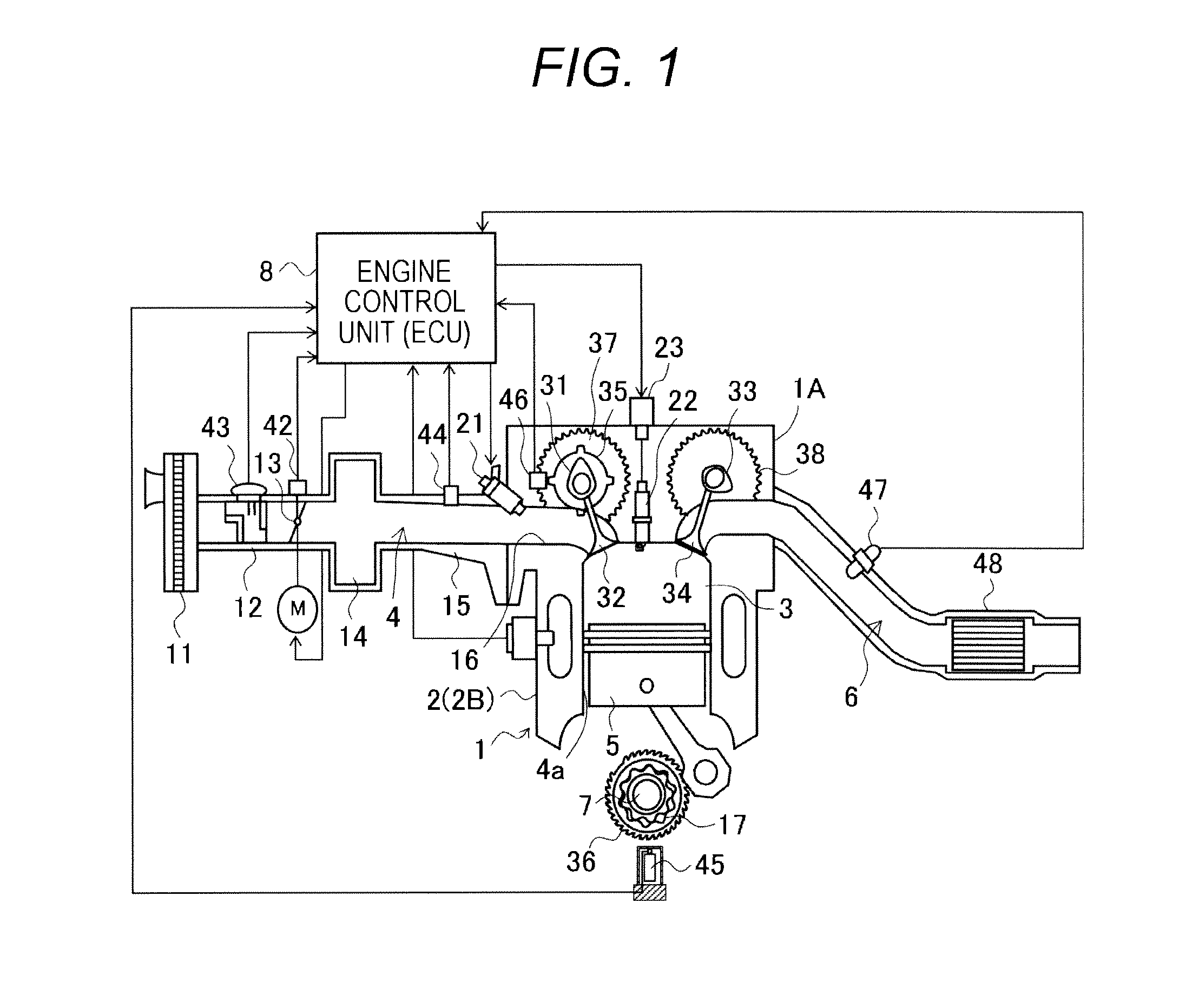Engine control unit
a technology of engine control and control unit, which is applied in the direction of engine starters, electric control, instruments, etc., can solve the problems of lowering fuel efficiency, unsatisfactory idle driving, and inability to achieve opportunity for learning, so as to improve the accuracy of engine stall prevention, torque control, and the like, and reduce fuel efficiency. the effect of idle driving
- Summary
- Abstract
- Description
- Claims
- Application Information
AI Technical Summary
Benefits of technology
Problems solved by technology
Method used
Image
Examples
first embodiment
[0054]Under such circumstances, in the first embodiment, whether or not the vehicle is in a stable driving state is determined at the time of non-idle driving. In a case where the vehicle is in the stable driving state, whether or not learning is required is determined. In a case where the learning is required, an idle stop is prohibited to make an idle driving state for the learning, and a characteristic change amount of an opening degree—air quantity characteristic representing relationship between an opening degree of the throttle valve 13 and an intake air quantity stored in a characteristic storing means (EP-ROM 8b) of the ECU 8 is learned to correct the previous characteristic stored in the characteristic storing means. The ECU 8 controls the throttle valve 13 with use of a latest opening degree—air quantity characteristic stored in the characteristic storing means.
[0055]Hereinafter, this will be described in details with reference to a flowchart in FIG. 5.
[0056]First, in step...
second embodiment
[0095]While determination of whether or not the throttle opening degree is a predetermined value or less is performed in S104 in FIG. 5, the determination of the throttle opening degree is performed in S330 here. Also, in S318, in addition to processing to clear the learning start counter, processing to clear a low throttle opening degree setting counter is added. The second embodiment includes a first requirement determining means performing learning requirement determination at an accidental throttle opening degree and a second requirement determining means performing learning requirement determination by forcedly lowering a throttle opening degree from the accidental throttle opening degree.
[0096]In a case where the air quantity separation amount is a predetermined value or less in S308, the procedure goes to S330. In S330, whether or not the throttle opening degree is a predetermined value or more is determined. In a case of a low throttle opening degree, which is influenced by ...
PUM
 Login to View More
Login to View More Abstract
Description
Claims
Application Information
 Login to View More
Login to View More - R&D
- Intellectual Property
- Life Sciences
- Materials
- Tech Scout
- Unparalleled Data Quality
- Higher Quality Content
- 60% Fewer Hallucinations
Browse by: Latest US Patents, China's latest patents, Technical Efficacy Thesaurus, Application Domain, Technology Topic, Popular Technical Reports.
© 2025 PatSnap. All rights reserved.Legal|Privacy policy|Modern Slavery Act Transparency Statement|Sitemap|About US| Contact US: help@patsnap.com



